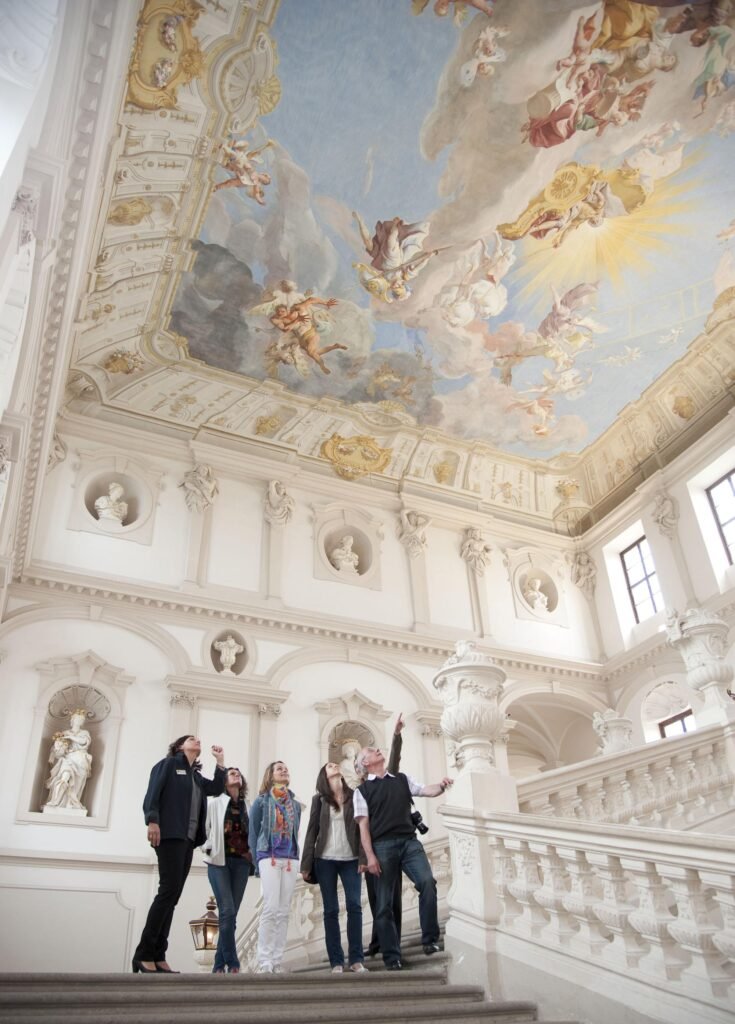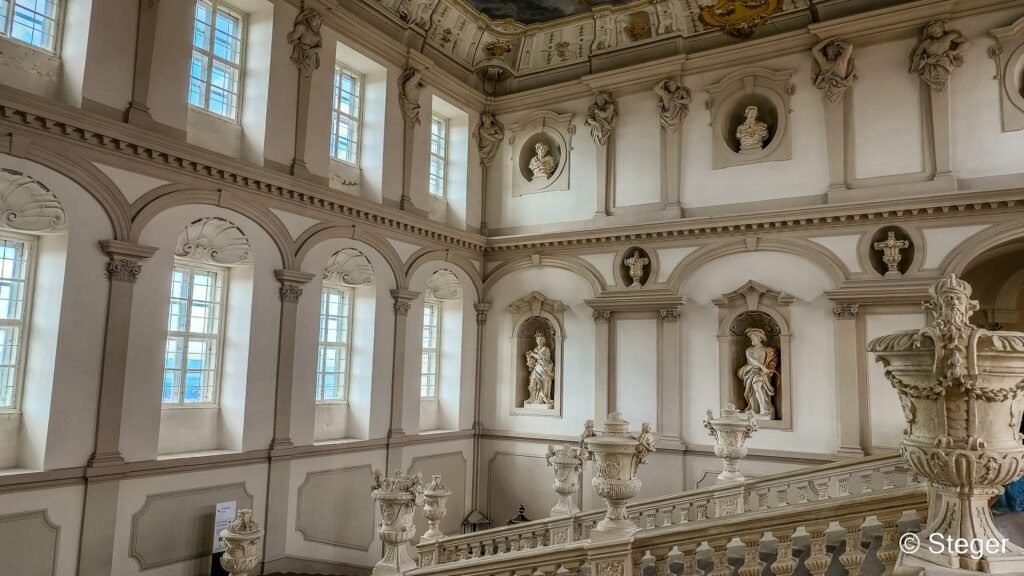Perched on a hill overlooking the Danube Valley near Krems, Lower Austria, Göttweig Abbey is a striking example of Baroque architecture and spiritual heritage. Known for its rich history, magnificent interiors, and panoramic views, Göttweig Abbey is often called the “Austrian Monte Cassino” due to its cultural and religious significance. For travelers seeking history, art, and scenic beauty, a visit to Göttweig Abbey is an unforgettable experience.
Historical Background
Göttweig Abbey was founded in 1083 by Blessed Altmann of Passau as a Benedictine monastery. Over the centuries, it has served as a spiritual, cultural, and educational center in the region. The abbey was rebuilt and expanded several times, most notably in the Baroque era under Abbot Gottfried von Einöd in the early 18th century.
Today, Göttweig Abbey is both a functioning monastery and a cultural landmark, attracting visitors interested in religious history, architecture, and the stunning landscapes of the Wachau Valley, a UNESCO World Heritage site.

Architectural and Artistic Highlights
Göttweig Abbey is renowned for its Baroque splendor, blending grand design with intricate detailing:
Palace-like Exterior: The abbey’s imposing facade and hilltop location make it visible from miles around, offering a dramatic introduction for visitors.
Imperial Staircase: The grand staircase leads into the abbey’s main halls and features elaborate stucco work and frescoes.
Abbey Church: Adorned with Baroque frescoes, gilded altars, and ornate chapels, the church is a masterpiece of religious art and design.
Library: The abbey houses a historic library filled with medieval manuscripts, rare books, and religious texts, showcasing its long-standing role as a center of learning.
Panoramic Views: From the abbey terraces, visitors can enjoy breathtaking views of the Danube River, vineyards, and surrounding towns, making it a favorite spot for photography and quiet contemplation.
The combination of architecture, art, and natural scenery makes Göttweig Abbey a must-see destination for anyone visiting Lower Austria.
Cultural and Spiritual Significance
Beyond its visual appeal, Göttweig Abbey holds immense cultural and spiritual importance:
Monastic Life: Benedictine monks continue to live, pray, and work at the abbey, preserving centuries-old religious traditions.
Educational Role: The abbey has historically served as a center of education, influencing religious and cultural development in the region.
Art and Music: Concerts, religious services, and cultural events often take place within the abbey, providing visitors with immersive experiences in Austrian Baroque culture.
Visitors gain a sense of the abbey’s living history, experiencing both its religious significance and its role in the cultural life of the region.
Visiting Göttweig Abbey
Göttweig Abbey is easily accessible from Krems, Melk, and Vienna, making it an excellent day-trip destination.

Practical Tips:
Opening Hours: Open daily, but hours may vary seasonally; check the official website for the latest information.
Admission: Entrance fees include access to the church, library, and selected exhibition areas. Guided tours are recommended for a deeper understanding of the abbey’s history.
Best Time to Visit: Spring and summer for blooming gardens and clear views; autumn for the colorful vineyards surrounding the abbey.
Accessibility: Some areas may have stairs or uneven surfaces; check in advance if accessibility is a concern.
Nearby Attractions
Visitors can combine a trip to Göttweig Abbey with other highlights in the Wachau Valley:
Melk Abbey: Another Baroque masterpiece located along the Danube.
Dürnstein: A picturesque town famous for its castle ruins and charming streets.
Danube River Cruises: Explore the valley’s vineyards, historic towns, and scenic landscapes from the water.
Wachau Vineyards: Sample regional wines and enjoy the beauty of Austria’s famous wine-growing region.
Conclusion
Göttweig Abbey is a destination that combines history, spirituality, art, and nature. From its magnificent Baroque architecture and richly decorated interiors to its panoramic views of the Danube Valley, the abbey offers a unique experience for travelers seeking both cultural enrichment and natural beauty. Whether you are an art and history enthusiast, a spiritual traveler, or simply looking for breathtaking landscapes, Göttweig Abbey stands as one of Lower Austria’s most remarkable and memorable landmarks.





















